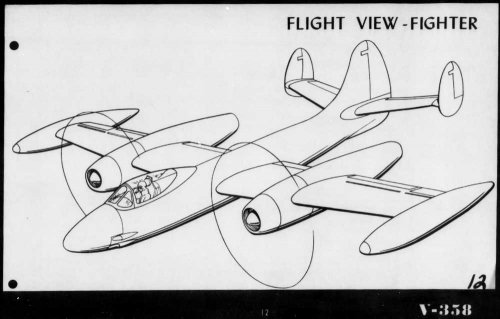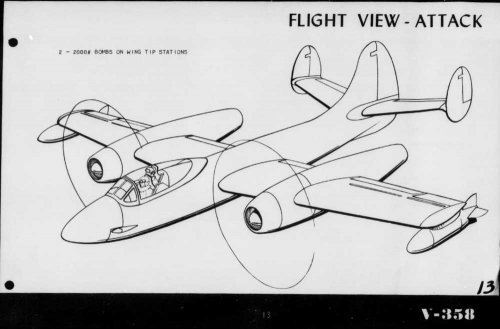You are using an out of date browser. It may not display this or other websites correctly.
You should upgrade or use an alternative browser.
You should upgrade or use an alternative browser.
Vought F6U - NOT the jet!
- Thread starter frank
- Start date
ysi_maniac
ACCESS: Confidential
- Joined
- 26 January 2007
- Messages
- 81
- Reaction score
- 30
Yeah!  Which book? I need some info about this! B)
Which book? I need some info about this! B)
ysi_maniac
ACCESS: Confidential
- Joined
- 26 January 2007
- Messages
- 81
- Reaction score
- 30
Who are you speaking with?airman said:are you sure to have seen fine ? ??? ???
No!Apophenia said:Does anyone know what Vought proposed for the 1937 BuAer RfP for a twin-engined carrier fighter won by the XF5F?
saturncanuck
Any landing you can walk away from, is a good one.
I have never heard this one.
A friend of mine once had photocopies of an old French aviation magazine and I borrowed them for a while and with the help of a dictionary went through them before returning them . So I am pretty sure as far as the hazy memory and the barely readable lines on a well used notebook allow that the first F6U was a monoreacteur or something like that , but it was very risky so the only things remained were the afterburner idea and the "Sandwich" materials . And USN chose Cutlass as a moderate advance .
Not much of a help in the ID attempt and can't guarentee it is not some alternative history . I was 15 at the time ; I still need total dictionary usage reading the French but as far as I can say it was so .
Not much of a help in the ID attempt and can't guarentee it is not some alternative history . I was 15 at the time ; I still need total dictionary usage reading the French but as far as I can say it was so .
- Joined
- 13 June 2007
- Messages
- 2,065
- Reaction score
- 2,495
In my visit to the Vought archives, I have not seen any F6U references other than to the Pirate but Photogator's time spent going thru the microfilm archives might uncover something. As for the F6U designation though, I would say Pirate and Pirate only.
I have found it helpful to reference the George Spangenberg oral history when trying to understand some of the history behind NavAir procurement:
George was deeply involved with much of the procurement process from before WWII up the F-14 and F/A-18 and I find his oral history to be a very interesting inside look on those years.
I read it as there was a solid understanding of the shortfalls of early jet engines (poor throttle response, high fuel burn) and the composite powered Ryan Fireball and Curtiss XF-15C were attempts to bridge that gap. I also feel, based on the way George describes it, that the FJ-1, F6U and FH-1 were built as much to give everyone (the Navy and the manufacturers/suppliers) experience in jet powered aircraft as it was to create a viable jet fighter and the small numbers of each type built would seem to bear that out. McDonnell did well with the lessons learned and created the F2H Banshee, North American used much of what they did with the Air Force and the F-86 (which evolved out of the FJ-1 with healthy dose of German swept wing research tossed in) to create the FJ-2 thru -4 Fury series and Vought went off in a different direction with the F7U. Tommy Thomason's book notes how the F7U-3 would likely have had a much better reputation and historical legacy if the angled deck were in use at the time. Having Westinghouse engines did not help either. Imagine a Cutlass with J-57s!
Enjoy the Day! Mark
I have found it helpful to reference the George Spangenberg oral history when trying to understand some of the history behind NavAir procurement:
George was deeply involved with much of the procurement process from before WWII up the F-14 and F/A-18 and I find his oral history to be a very interesting inside look on those years.
I read it as there was a solid understanding of the shortfalls of early jet engines (poor throttle response, high fuel burn) and the composite powered Ryan Fireball and Curtiss XF-15C were attempts to bridge that gap. I also feel, based on the way George describes it, that the FJ-1, F6U and FH-1 were built as much to give everyone (the Navy and the manufacturers/suppliers) experience in jet powered aircraft as it was to create a viable jet fighter and the small numbers of each type built would seem to bear that out. McDonnell did well with the lessons learned and created the F2H Banshee, North American used much of what they did with the Air Force and the F-86 (which evolved out of the FJ-1 with healthy dose of German swept wing research tossed in) to create the FJ-2 thru -4 Fury series and Vought went off in a different direction with the F7U. Tommy Thomason's book notes how the F7U-3 would likely have had a much better reputation and historical legacy if the angled deck were in use at the time. Having Westinghouse engines did not help either. Imagine a Cutlass with J-57s!
Enjoy the Day! Mark
Last edited:
- Joined
- 17 May 2008
- Messages
- 676
- Reaction score
- 1,358
The V-358 was a proposal for a twin engine fighter/attack aircraft.
In the report is speaks to the fact that it is no larger than the F7F
or AD-1. The attack version is a two seater with offset seats, the
fighter version is a single seater.
Vought archives
In the report is speaks to the fact that it is no larger than the F7F
or AD-1. The attack version is a two seater with offset seats, the
fighter version is a single seater.
Vought archives
Attachments
I just read the brief description of this twin engine design in the book U.S. Naval Fighters 1922 to 1980s by Lloyd S. Jones. In it, he describes that the designation was originally given in 1943 to a twin piston engine fighter design similar, and possibly in competition with, the F7F. When the Navy lost interest in this configuration in 1945, the designation was "transferred" to a new jet fighter (the Pirate). The V-358 designation and pictures seem to indicate a different, later, design (c.1947 perhaps?), especially the tip tanks. So, to get back to the original question, has anyone ever seen any ilustration of the earlier F6U, possibly V-340? Thanks!
Tophe
ACCESS: Top Secret
In the Docavia book #20 “Les avions Vought”: (picture-less list)
V-338 of 1944: single-seat twin-engine fighter for USN carriers
V-339 of 1944: single-seat twin-engine fighter for USN
V-340 of 1944: single-seat jet fighter, future XF6U-1
V-358 of 1947: high performance attack plane for USN
V-338 of 1944: single-seat twin-engine fighter for USN carriers
V-339 of 1944: single-seat twin-engine fighter for USN
V-340 of 1944: single-seat jet fighter, future XF6U-1
V-358 of 1947: high performance attack plane for USN
Hey! This sounds like what I remember reading! It just wasn't in a Corsair book!. No wonder I couldn't find it! Thanks. A better chance that I didn't dream it. 
garys said:I just read the brief description of this twin engine design in the book U.S. Naval Fighters 1922 to 1980s by Lloyd S. Jones. In it, he describes that the designation was originally given in 1943 to a twin piston engine fighter design similar, and possibly in competition with, the F7F. When the Navy lost interest in this configuration in 1945, the designation was "transferred" to a new jet fighter (the Pirate). The V-358 designation and pictures seem to indicate a different, later, design (c.1947 perhaps?), especially the tip tanks. So, to get back to the original question, has anyone ever seen any ilustration of the earlier F6U, possibly V-340? Thanks!
Similar threads
-
Little-known Vought projects from World War II
- Started by Antonio
- Replies: 71
-
Grumman unbuilt pre-1945 fighter designs
- Started by Antonio
- Replies: 8
-
Vought-Sikorsky VS-311 Rotating Wing Aircraft
- Started by Bill S
- Replies: 12
-
-
The life and times of the Vought V-70 demonstrator
- Started by Stargazer
- Replies: 2


